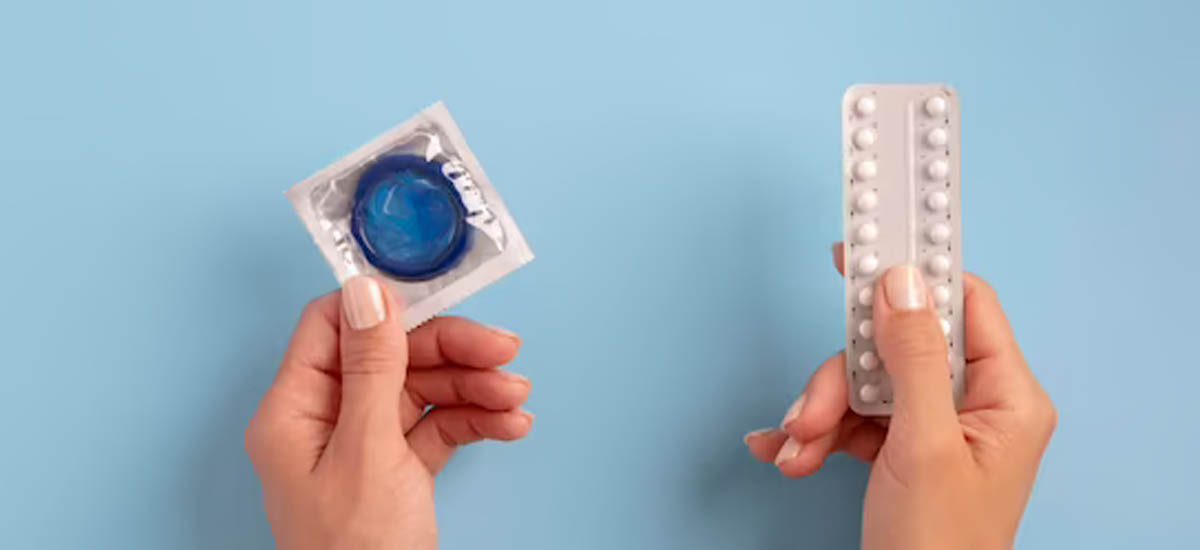
A complete guide about contraception and it’s methods
As women began to call the shots (well some of them at least) by the start of this century, the pressure was on to find a safe and suitable method by which they can control their fertility. The freedom that such a method or device could give them was immense because until then the woman had no say in these issues; if she got pregnant she had to put everything on hold until the baby was at least a few years old by which time she would probably be pregnant again! There was also no access to a safe way to terminate an unwanted pregnancy.
This system was disadvantageous to women, so much so that it was only after the advent of widespread use of contraceptives that society realized how drastically it had tilted the balance in the favour of women (yes, we know it’s not fully balanced yet; but it was tilted..!!).
Needless to say it was feminist movements all over the world that changed public opinion about sex and contraception. The demand to give the woman the right to decide when and where she will get pregnant rose to such a pitch that by late 20 th century it was accepted world over that contraception is here to stay!
Methods of contraception:
Natural methods– here the word natural means that there is no use of drugs or other material to aid in contraception, only the manipulation of the physiology of reproduction
Coitus interruptus: yes, there is actually such a term which means exactly what its sounds like, the couple interrupts their sexual intercourse just as the man is about to ejaculate by withdrawing his penis such that the ejaculate falls somewhere other than in the vagina! Needless to say, this method is highly risky and such stunts should be performed by trained professionals only! Not only does it have a high failure rate but also there is no choice except to trust the man’s definition of ‘when’ he has to pull out; and as we all know men make mistakes and to expect him to think straight while about to ejaculate is a bit much. The fact that the penile secretions that occur before the semen is ejaculated contains sperms as well makes it even more difficult to guarantee the success of this method.
Calendar method: this method uses the fact that the woman is fertile only for a few days in her menstrual calendar and to have intercourse on the remaining days should be reasonably safe. But again this method has a high failure rate due to the fact that not every menstrual cycle is the same. As much as we would like it to go like clockwork, it rarely does and that to only for a few months at a stretch before it gets altered again. So there are chances that the woman may ovulate outside her ‘fertile’ period and thus get pregnant while using this method. The last natural contraceptive method that’s mentioned is Abstinence! Yes, its like a person asking how he can be safe from road traffic accidents and me replying ‘don’t drive!’ Obviously abstinence doesn’t solve the problem so I won’t elaborate much on that here.
Barrier methods: these methods employ the use of a barrier between the sperms and the female reproductive tract in order to prevent its interaction with the eggs.
Condoms (male):
The idea of using something to cover the penis so as to prevent the ejaculate from falling into the vagina is more than 300 years old. Materials like an animal membrane (intestines, bladders) and linen have been used in varying forms to try and create a condom. Its effectiveness is debatable. Rubber condoms became popular in the mid to late 19 th century and were heavily relied upon to stop the AIDS epidemic.
It is basically a rubber sheath that is the shape and size of an average erect penis that can be easily rolled onto it prior to vaginal penetration. It’s easy to use, cheap and widely available and has absolutely no side effects thus making it the most popular choice especially among youngsters and unmarried couples (who have ‘forbidden’ sex and therefore need something that can be bought without prescription, needs no medical supervision and has no side effects). Strangely enough, these same young men dislike condoms after marriage because reduces their pleasure/sensation, and also now they don’t really care because its not forbidden anymore!
Its important to know that now there are a variety of condoms available, extremely thin ones that can be used by those who feel a decrease in sensation and thicker ones which can be used by men who tend to ejaculate faster. Even though it has a higher failure rate than hormonal contraceptives due to its obvious advantages in other aspects it still remains one of the most widely used contraceptive measures.
Condoms (female):
Similar to the male condom this is also a rubber sheath, which covers the entire vulva, vagina and cervical area. Obviously it is much larger in size and more difficult to handle than a male condom which is much handier. It frequently gets displaced during sex and so needless to say it is not very popular.
Similarly, there are diaphragms, cervical caps etc, which are barrier methods, made to be used by the woman. They need to be placed strategically at the cervix, which requires some practice and again is not as popular as the male condom.
Hormonal methods:
These methods make use of synthetic hormones namely estrogen and progesterone to alter the hormonal milieu of the female body and thus make it non-receptive to pregnancy. They come in the form of tablets (oral contraceptive pills, progesterone only pills etc), skin patches, injections, subdermal implants and also intra uterine devices.
Initially, as the doses of the hormones were high the side effects experienced by women were also considerable, but as time and research proved its efficacy even in lower doses, the side effect profile of these drugs improved dramatically.
Hormonal implants and injections have the lowest failure rate followed by OCP’s which is also used to treat other conditions such as abnormal uterine bleeding, PCOS etc.
Intrauterine devices:
These devices were developed when it was understood that in the presence of a foreign body in the uterus conception fails to occur due to various reasons such as sterile inflammation etc. The initial device was a failure due to high infection rates due to a flaw in the design, which was later rectified, and the highly popular copper T was developed. As the name suggests it is a T shaped device made of copper. It snugly fits into the uterine cavity and releases a fixed quantity of copper every day ensuring that a sterile inflammation takes place and conception is prevented. Many varieties of the original design are now available and each of them has a specific period of time throughout which it can be used ranging from 5 to as much as 12 years.
A variation in the design led to the development of hormonal IUDs where the hormone is stored in a reservoir in the stem of the T device and inserted. A specific quantity of the hormone is released every day and the device has to be replaced once it is over. This is only used in specific situations such as endometrial hyperplasia, abnormal uterine bleeding etc.
Permanent methods:
Also known as sterilization, these procedures render the person sterile or unable to reproduce. This is for people who have completed their family and are sure that they won’t want to get pregnant again. The procedure is simple, we cut or block the passage of the egg (in females) or the sperm (in males). Known as tubectomy or vasectomy respectively. Vasectomy far outweighs tubectomy in terms of the benefit-risk ratio due to the following:
- No need for higher levels of anaesthesia (local anaesthesia will suffice)
- No need for hospital admission
- No risk of major complications during the procedure
- Less expensive
All the above-mentioned reasons are true because the man’s ‘apparatus’ lies outside the body, is easy to access and thus makes the entire procedure simpler and less risky!
But again due to generations of patriarchy tubectomy is performed far more frequently than a vasectomy. The ignorance among the general population about such a procedure for men is appalling. Despite its numerous benefits women are put under the knife because people, even women, are conditioned to think that
- ‘men’ don’t do such things!
- Reproduction is a woman’s business!
- Vasectomy injures the man’s ‘manhood’!
- The lady has anyway been through delivery either normal or caesarean,
why not tubectomy also!
The reasons are plenty, each sillier than the previous one. Rest assured that the procedure does not hamper penile erections or testosterone secretions and thus has nothing to do with the ‘manhood’ of a man!
Conclusion:
To reproduce or not is each individuals choice. Better to take either decision with careful thought and planning. In order to do that you must be informed about the various choices available with side effects and benefits of each. So at such a juncture in your family life do contact your gynecologist and take an informed decision.
Related posts

Endometriosis


